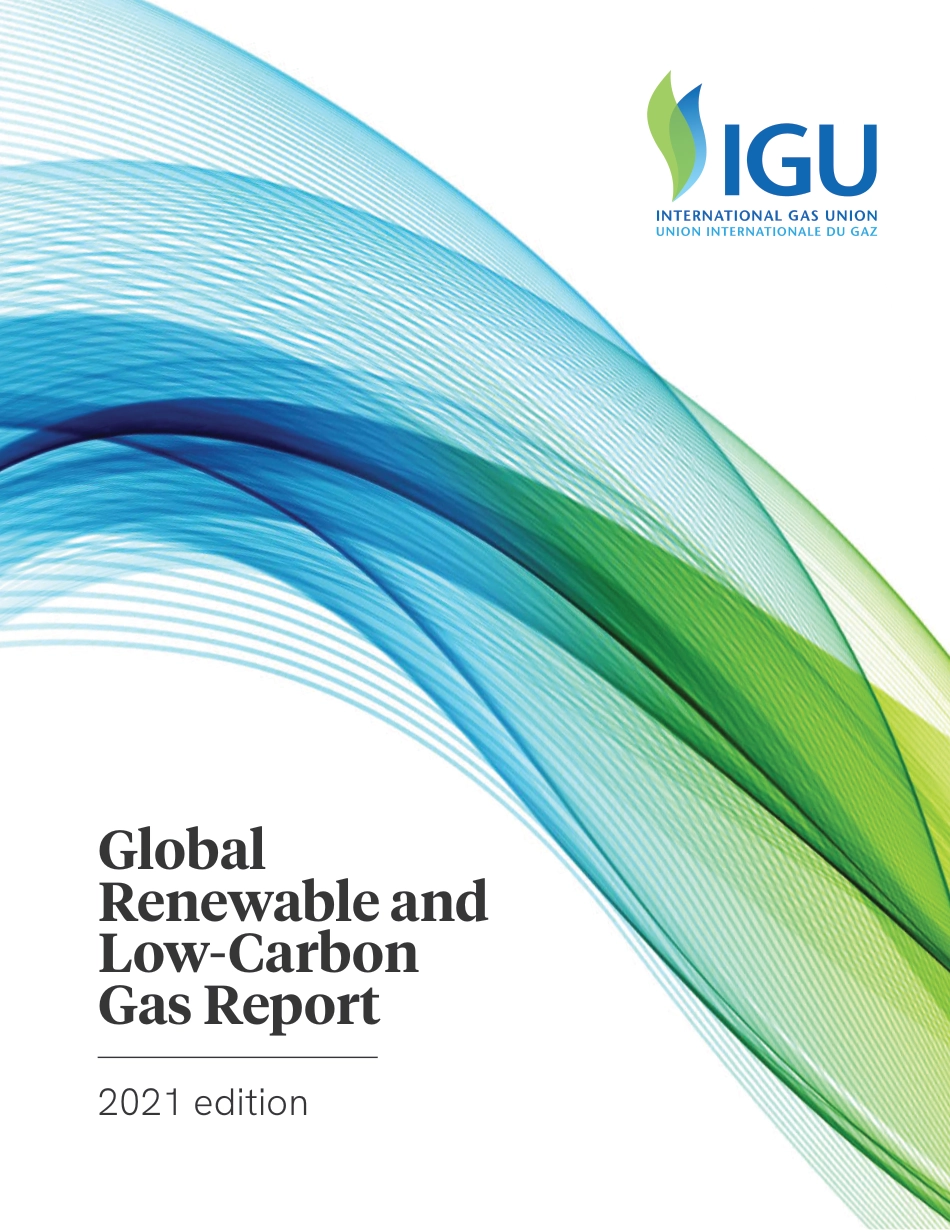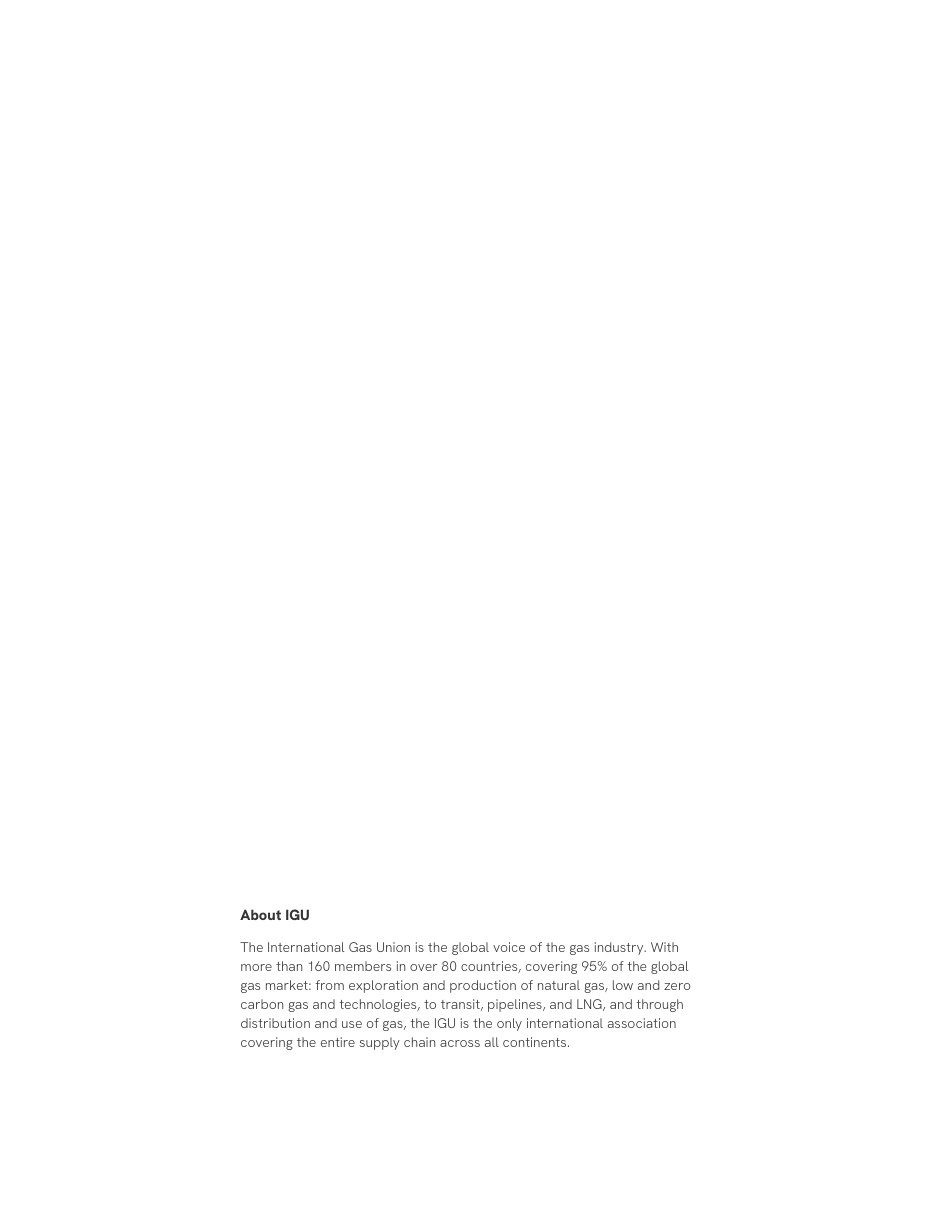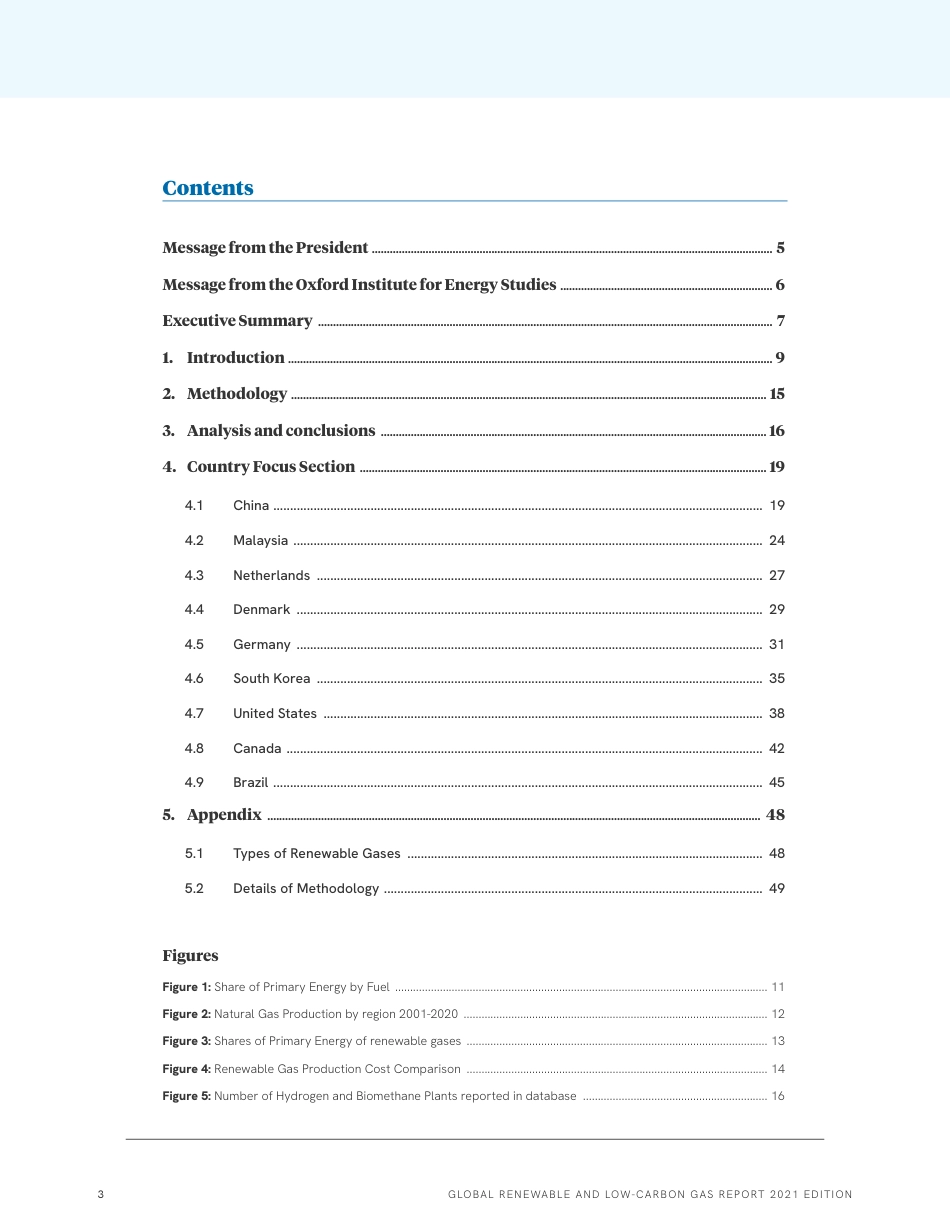Global Renewable and Low-Carbon Gas Report2021 editionAbout IGUThe International Gas Union is the global voice of the gas industry. With more than 160 members in over 80 countries, covering 95% of the global gas market: from exploration and production of natural gas, low and zero carbon gas and technologies, to transit, pipelines, and LNG, and through distribution and use of gas, the IGU is the only international association covering the entire supply chain across all continents.3GLOBAL RENEWABLE AND LOW-CARBON GAS REPORT 2021 EDITIONContentsMessage from the President ...................................................................................................................................... 5Message from the Oxford Institute for Energy Studies ....................................................................... 6Executive Summary ........................................................................................................................................................ 71. Introduction .................................................................................................................................................................. 92. Methodology ............................................................................................................................................................... 153. Analysis and conclusions ................................................................................................................................. 164. Country Focus Section ........................................................................................................................................ 194.1 China .................................................................................................................................................. 194.2 Malaysia ..................



